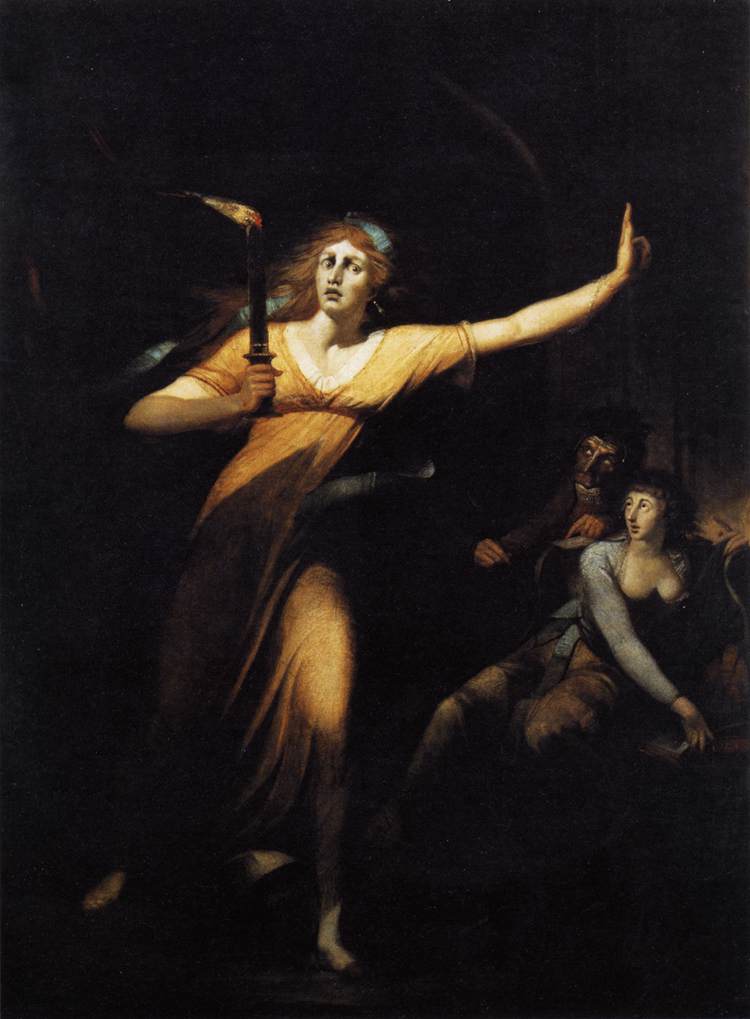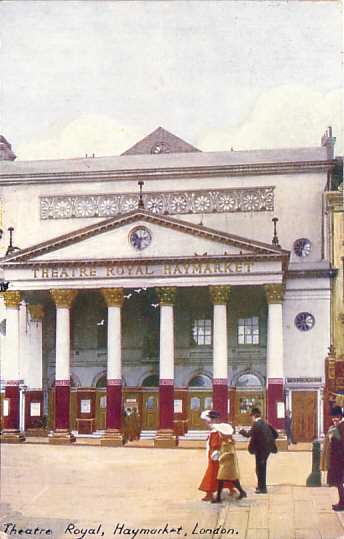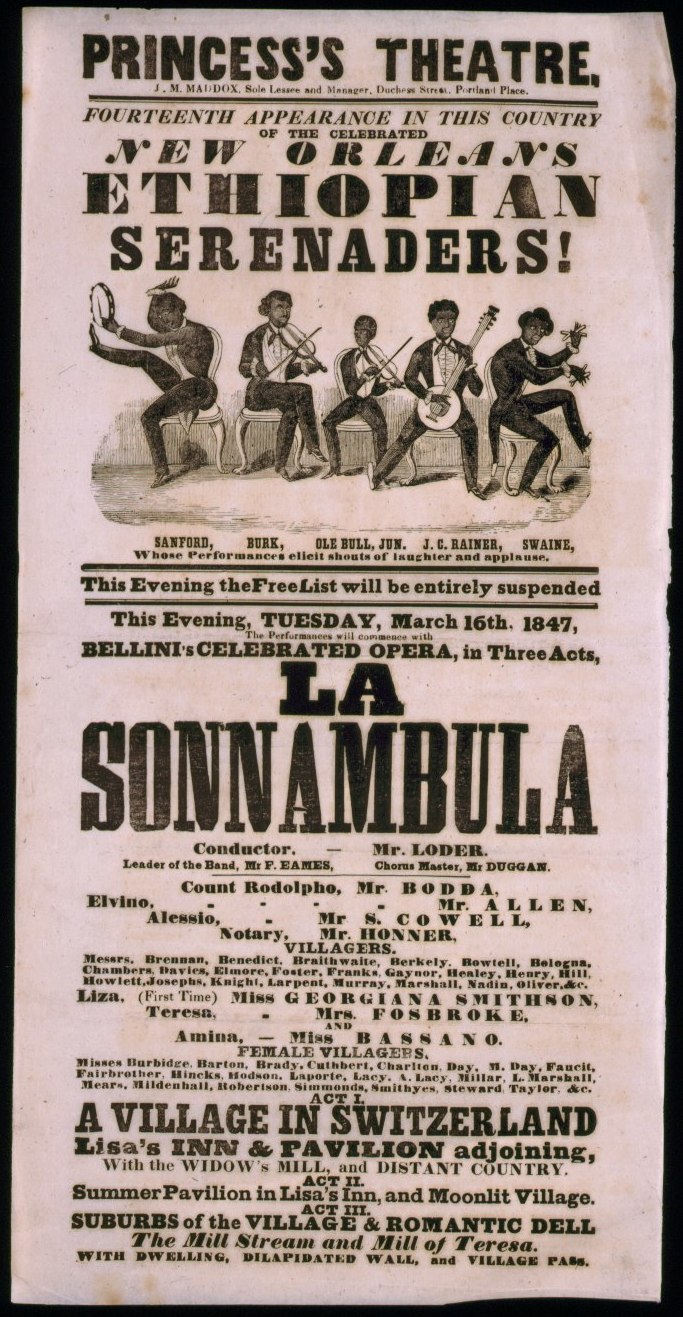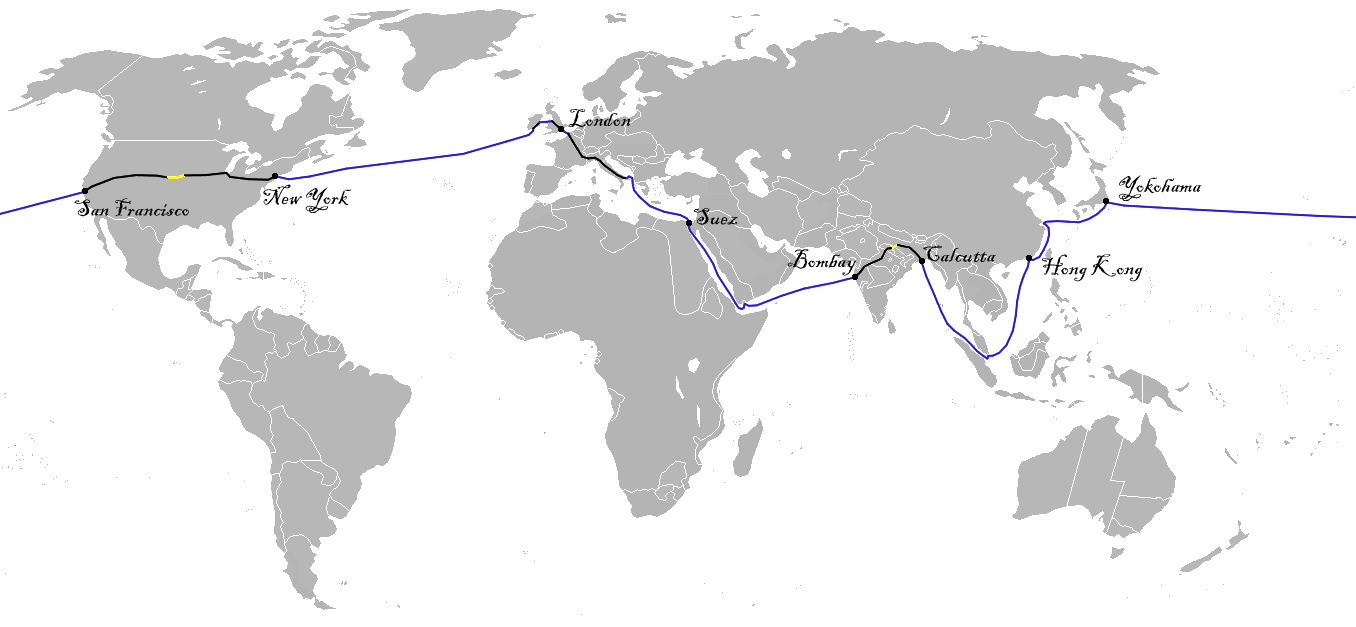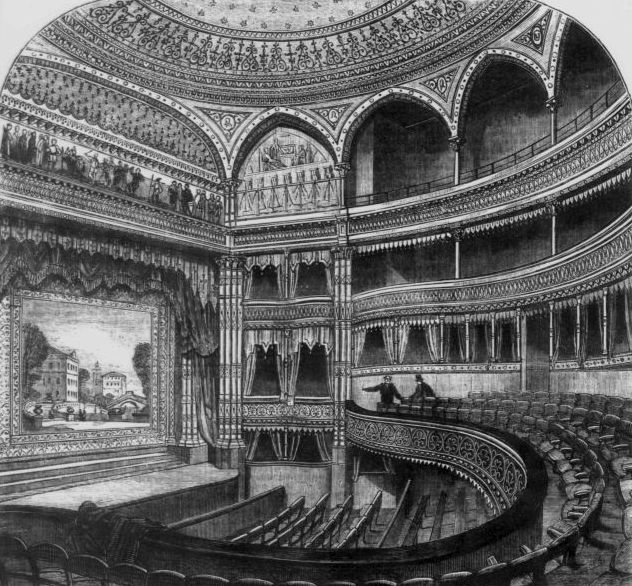|
Helen Barry
Helen Barry (born Elizabeth Short, 5 January 1840 – 20 July 1904) was an English actress. She began her acting career at age 32 after her first marriage dissolved. She performed leading roles in West End theatres in the 1870s in comedy, drama and Victorian burlesque and remarried in 1877 to Alexander Rolls, the former Mayor of Monmouth, briefly moving to Wales. But she was acting in London again by 1880, and her husband died in 1882. Barry soon remarried and moved to America, where she was again widowed within a year. She continued her stage career, both in New York and London, for more than a decade thereafter. Childhood and first marriage Barry was born as Elizabeth Short in Lee, now a suburb of London but then a village in the county of Kent; she was the daughter of Charles Henry Short and his wife Mary. Elizabeth married Joseph Brandon, a Belgian, on 3 May 1855 when she was fifteen years old. The ceremony took place at the Parish Church of Saint Luke, Charlton, Kent. ... [...More Info...] [...Related Items...] OR: [Wikipedia] [Google] [Baidu] |
Kent
Kent is a county in South East England and one of the home counties. It borders Greater London to the north-west, Surrey to the west and East Sussex to the south-west, and Essex to the north across the estuary of the River Thames; it faces the French department of Pas-de-Calais across the Strait of Dover. The county town is Maidstone. It is the fifth most populous county in England, the most populous non-Metropolitan county and the most populous of the home counties. Kent was one of the first British territories to be settled by Germanic tribes, most notably the Jutes, following the withdrawal of the Romans. Canterbury Cathedral in Kent, the oldest cathedral in England, has been the seat of the Archbishops of Canterbury since the conversion of England to Christianity that began in the 6th century with Saint Augustine. Rochester Cathedral in Medway is England's second-oldest cathedral. Located between London and the Strait of Dover, which separates England from mainla ... [...More Info...] [...Related Items...] OR: [Wikipedia] [Google] [Baidu] |
Leeds
Leeds () is a city and the administrative centre of the City of Leeds district in West Yorkshire, England. It is built around the River Aire and is in the eastern foothills of the Pennines. It is also the third-largest settlement (by population) in England, after London and Birmingham. The city was a small manorial borough in the 13th century and a market town in the 16th century. It expanded by becoming a major production centre, including of carbonated water where it was invented in the 1760s, and trading centre (mainly with wool) for the 17th and 18th centuries. It was a major mill town during the Industrial Revolution. It was also known for its flax industry, iron foundries, engineering and printing, as well as shopping, with several surviving Victorian era arcades, such as Kirkgate Market. City status was awarded in 1893, a populous urban centre formed in the following century which absorbed surrounding villages and overtook the nearby York population. It is locate ... [...More Info...] [...Related Items...] OR: [Wikipedia] [Google] [Baidu] |
Breeches Role
A breeches role (also pants role or trouser role, or Hosenrolle) is one in which an actress appears in male clothing. Breeches, tight-fitting knee-length pants, were the standard male garment at the time these roles were introduced. The theatrical term ''travesti'' covers both this sort of cross-dressing and also that of male actors dressing as female characters. Both are part of the long history of cross-dressing in music and opera and later in film and television. In opera, a breeches role refers to any male character that is sung and acted by a female singer. Most often the character is an adolescent or a very young man, sung by a mezzo-soprano or contralto. Budden J., "Breeches part" in: ''The New Grove Dictionary of Opera''. Macmillan, London and New York, 1997. The operatic concept assumes that the character is male, and the audience accepts him as such, even knowing that the actor is not. Cross-dressing female characters (e.g., Leonore in ''Fidelio'' or Gilda in Act III ... [...More Info...] [...Related Items...] OR: [Wikipedia] [Google] [Baidu] |
Theatre Royal, Edinburgh
The history of the Theatre Royal, Edinburgh involves two sites. The first building, on Princes Street, opened 1769 and was rebuilt in 1830 by Thomas Hosmer Shepherd. The second site was on Broughton Street. History The first Theatre Royal was in Shakespeare Square, at the east end of Princes Street. This was opened 9 December 1769 by actor-manager David Ross. Mary Bulkley performed here during the 1780s. In July 1792 Harriet Pye Esten became the theatre manager when she purchased the lease. The theatre had been run by Stephen Kemble but he lost the rights to perform which were withdrawn by Esten's lover Douglas Hamilton, 8th Duke of Hamilton. In 1794 Esten returned the rights to Stephen Kemble to perform in Edinburgh in exchange for £200 a year. In 1809 the theatre was taken over by Sarah Siddons's actor son, Henry Siddons. It went into a period of decline under his control, but following his death in 1815 was revived by his wife, Harriet Siddons and her brother Willia ... [...More Info...] [...Related Items...] OR: [Wikipedia] [Google] [Baidu] |
Lady Teazle
''The School for Scandal'' is a comedy of manners written by Richard Brinsley Sheridan. It was first performed in London at Drury Lane Theatre on 8 May 1777. Plot Act I Scene I: Lady Sneerwell, a wealthy young widow, and her hireling Snake discuss her various scandal-spreading plots. Snake asks why she is so involved in the affairs of Sir Peter Teazle, his ward Maria, and Charles and Joseph Surface, two young men under Sir Peter's informal guardianship, and why she has not yielded to the attentions of Joseph, who is highly respectable. Lady Sneerwell confides that Joseph wants Maria, who is an heiress, and that Maria wants Charles. Thus she and Joseph are plotting to alienate Maria from Charles by putting out rumours of an affair between Charles and Sir Peter's new young wife, Lady Teazle. Joseph arrives to confer with Lady Sneerwell. Maria herself then enters, fleeing the attentions of Sir Benjamin Backbite and his uncle, Crabtree. Mrs. Candour enters and ironically talks ... [...More Info...] [...Related Items...] OR: [Wikipedia] [Google] [Baidu] |
Lady Macbeth
Lady Macbeth is a leading character in William Shakespeare's tragedy '' Macbeth'' (). As the wife of the play's tragic hero, Macbeth (a Scottish nobleman), Lady Macbeth goads her husband into committing regicide, after which she becomes queen of Scotland. After Macbeth becomes a murderous tyrant, she is driven to madness by guilt over their crimes, and commits suicide offstage. Lady Macbeth is a powerful presence in the play, most notably in the first two acts. Following the murder of King Duncan, however, her role in the plot diminishes. She becomes an uninvolved spectator to Macbeth's plotting and a nervous hostess at a banquet dominated by her husband's hallucinations. Her sleepwalking scene in the fifth act is a turning point in the play, and her line "Out, damned spot!" has become a phrase familiar to many speakers of the English language. The report of her death late in the fifth act provides the inspiration for Macbeth's "Tomorrow and tomorrow and tomorrow" speech. Th ... [...More Info...] [...Related Items...] OR: [Wikipedia] [Google] [Baidu] |
The School For Scandal
''The School for Scandal'' is a comedy of manners written by Richard Brinsley Sheridan. It was first performed in London at Drury Lane Theatre on 8 May 1777. Plot Act I Scene I: Lady Sneerwell, a wealthy young widow, and her hireling Snake discuss her various scandal-spreading plots. Snake asks why she is so involved in the affairs of Sir Peter Teazle, his ward Maria, and Charles and Joseph Surface, two young men under Sir Peter's informal guardianship, and why she has not yielded to the attentions of Joseph, who is highly respectable. Lady Sneerwell confides that Joseph wants Maria, who is an heiress, and that Maria wants Charles. Thus she and Joseph are plotting to alienate Maria from Charles by putting out rumours of an affair between Charles and Sir Peter's new young wife, Lady Teazle. Joseph arrives to confer with Lady Sneerwell. Maria herself then enters, fleeing the attentions of Sir Benjamin Backbite and his uncle, Crabtree. Mrs. Candour enters and ironically talks ... [...More Info...] [...Related Items...] OR: [Wikipedia] [Google] [Baidu] |
The Lady Of Lyons
''The Lady of Lyons; or, Love and Pride'', commonly known as ''The Lady of Lyons'', is a five act romantic melodrama written in 1838 by Edward Bulwer-Lytton, 1st Baron Lytton. It was first produced in London at Covent Garden Theatre on 15 February 1838 and was revived many times over the rest of the 19th century. It was also adapted into two operas, and formed part of the plot of an operetta. Plot Pauline Deschapelles has jilted the Marquis Beauséant. Claude Melnotte, the son of Pauline's gardener, is in love with her. Beauséant persuades Melnotte to disguise himself as a foreign prince to trick Pauline into marrying him. When Melnotte takes Pauline to his widowed mother's home after the marriage, she discovers the ruse and gets the marriage annulled. Melnotte enlists in the army to assuage his remorse. Pauline's father is then threatened with bankruptcy, and Beauséant is willing to pay the debt if Pauline will marry him. Melnotte becomes a war hero, and Pauline realises ... [...More Info...] [...Related Items...] OR: [Wikipedia] [Google] [Baidu] |
Haymarket Theatre
The Theatre Royal Haymarket (also known as Haymarket Theatre or the Little Theatre) is a West End theatre on Haymarket in the City of Westminster which dates back to 1720, making it the third-oldest London playhouse still in use. Samuel Foote acquired the lease in 1747, and in 1766 he gained a royal patent to play legitimate drama (meaning spoken drama, as opposed to opera, concerts or plays with music) in the summer months. The original building was a little further north in the same street. It has been at its current location since 1821, when it was redesigned by John Nash. It is a Grade I listed building, with a seating capacity of 888. The freehold of the theatre is owned by the Crown Estate. The Haymarket has been the site of a significant innovation in theatre. In 1873, it was the venue for the first scheduled matinée performance, establishing a custom soon followed in theatres everywhere. Its managers have included Benjamin Nottingham Webster, John Baldwin Buckstone, S ... [...More Info...] [...Related Items...] OR: [Wikipedia] [Google] [Baidu] |
Princess's Theatre
The Princess's Theatre or Princess Theatre was a theatre in Oxford Street Oxford Street is a major road in the City of Westminster in the West End of London, running from Tottenham Court Road to Marble Arch via Oxford Circus. It is Europe's busiest shopping street, with around half a million daily visitors, and as ..., London. The building opened in 1828 as the "Queen's Bazaar" and housed a diorama by Clarkson Stanfield and David Roberts. It was converted into a theatre and opened in 1836 as the Princess's Theatre, named for then Queen Victoria, Princess Victoria before her accession as queen. After an unsuccessful series of promenade concerts, alterations were made on the interior, and the theatre was reopened on 26 December 1842 with Vincenzo Bellini's opera ''La sonnambula''. The theatre, by now under the management of John Medex Maddox, presented operas and other entertainments, such as General Tom Thumb. The theatre is best remembered for Charles Kean's Shakespe ... [...More Info...] [...Related Items...] OR: [Wikipedia] [Google] [Baidu] |
Around The World In 80 Days
''Around the World in Eighty Days'' (french: link=no, Le tour du monde en quatre-vingts jours) is an adventure novel by the French writer Jules Verne, first published in French in 1872. In the story, Phileas Fogg of London and his newly employed French valet Jean Passepartout, Passepartout attempt to Circumnavigation, circumnavigate the world in 80 days on a wager of £20,000 set by his friends at the Reform Club. It is one of Verne's most acclaimed works. Plot Phileas Fogg is a wealthy English gentleman living a solitary life in London. Despite his wealth, Fogg lives modestly and carries out his habits with mathematical precision. Very little can be said about his social life other than that he is a member of the Reform Club, where he spends the best part of his days. Having dismissed his valet for bringing him shaving water at a temperature slightly lower than expected, Fogg hires Frenchman Jean Passepartout as a replacement. On the evening of 2 October 1872, while at the Ref ... [...More Info...] [...Related Items...] OR: [Wikipedia] [Google] [Baidu] |
Gaiety Theatre, London
The Gaiety Theatre was a West End theatre in London, located on Aldwych at the eastern end of the Strand. The theatre was first established as the Strand Musick Hall in 1864 on the former site of the Lyceum Theatre. In 1868, it became known as the Gaiety Theatre and was, at first, known for music hall and then for musical burlesque, pantomime and operetta performances. From 1868 to the 1890s, it had a major influence on the development of modern musical comedy. Under the management of John Hollingshead until 1886, the theatre had early success with ''Robert the Devil'', by W. S. Gilbert, followed by many other burlesques of operas and literary works. Many of the productions starred Nellie Farren. Hollingshead's last production at the theatre was the burlesque ''Little Jack Sheppard'' (1885–86), produced together with his successor, George Edwardes. Edwardes's first show, ''Dorothy'', became a long-running hit. In the 1880s and 90s, the theatre had further success with a ... [...More Info...] [...Related Items...] OR: [Wikipedia] [Google] [Baidu] |
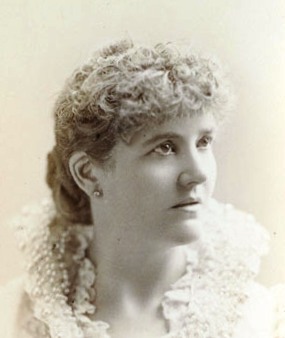
.jpg)


